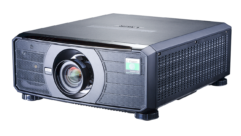New Light Sources May Drive POF Growth
Feb 28, 2007 8:00 AM
Plastic optical fiber (POF) has gained attention as a low-cost, easy-to-use alternative to more complex and expensive glass fiber. POF researchers and vendors today are focused on improving the performance of the product by increasing its capacity and range—and increasingly, their attention is falling on the light sources used with POF.
The right light source can be a key part of the solution to the equation of price, performance, and ease of installation, which POF advocates believe tilts in the direction of plastic for a growing number of on-premises and other short-haul data transmission needs.
Among the appeals of POF is the opportunity to use inexpensive LED light sources instead of lasers. Dr. Paul Polishuk, president of IGI Consulting and secretary of the Plastic Optical Fiber Trade Organization, points out that POF will work with laser light sources, but LEDs remain significantly cheaper.
Most LED-based POF systems have relied on red light, usually with a wavelength of around 650nm, Polishuk says. That’s chiefly to take advantage of the minimal absorption of this wavelength by the plastic, which has been a factor in limiting the distances over which POF cables can carry data.
Recently, researchers have been testing shorter wavelengths, such as green at 580nm, and blue at about 470nm. “Based on all the activity recently on blue, blue looks like it may be a good choice,” Polishuk says.
ASTRI, the Hong Kong Applied Science and Technology Research Institute, has an ongoing project looking into the performance of different LED wavelengths.
“We are developing red, green, and blue LED-based transmitter modules to extend the reach of plastic optical fiber (POF) for low- to medium-speed industrial control applications with typical data rates over 10Mbps,” ASTRI reports.
”With the red LED-based transmitter, the transmission data rate can reach 100Mbps,” ASTRI continues. “The transmission distance of red LED-based transmitter modules is limited by the absorption of POF and the decrease in output power of the LED over the operating temperature range. Standard POF shows a broader and lower optical loss in the visible green and blue wavelength range around 520nm and 470nm, respectively.
“The green and blue LEDs exhibit only a small decrease of output power at high temperature, because of the high bandgap offsets of the active material. With the green LED transmitter, the transmission distance can be extended due to the improved temperature stability of the LED and the spectrally wider transmission window of the standard POF.”
Data from ASTRI’s website indicates that for transmission rates of 20Mbps to 50Mbps, green and blue LEDs become more appealing for longer distances. Red LEDs remain the first choice for short-haul transmission at up to 100Mbps, but when both capacity and distance are high, lasers remain the light source of choice.
“The maximum transmission rate is about 100Mbps with green and blue LED,” says Polishuk. “For sources to get up to 1Gb, you have to go to a laser.”
Solving this equation, and delivering the right combination of bandwidth and distance capability, will be critical for POF applications involving extensive video transmission.










